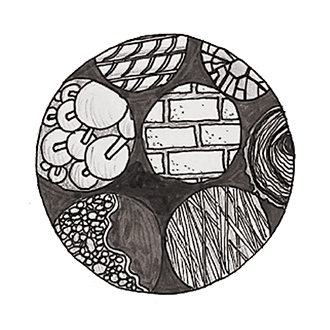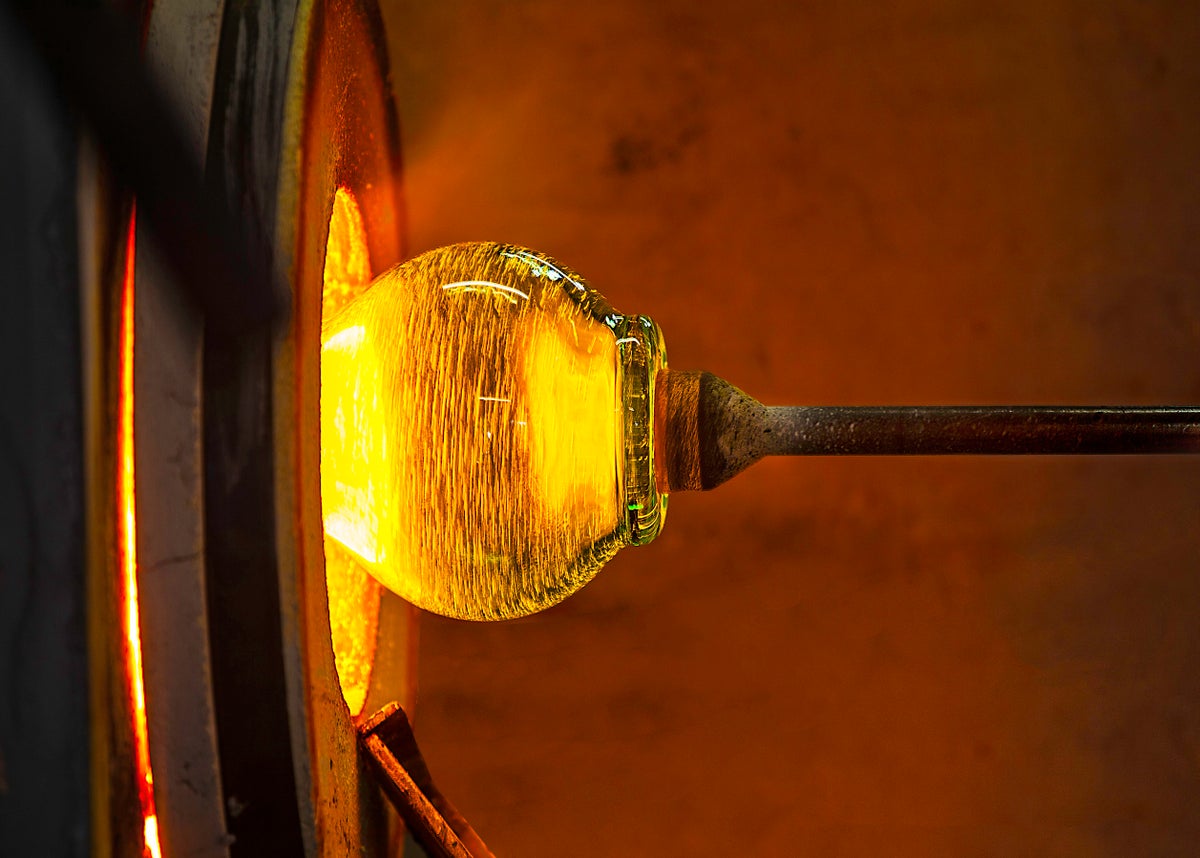I learn something new on this forum every day
What's in the Window?
- Thread starter solideogloria86
- Start date
You are using an out of date browser. It may not display this or other websites correctly.
You should upgrade or use an alternative browser.
You should upgrade or use an alternative browser.
SmokingPipes.com Updates
Watch for Updates Twice a Week
I think you're wrong. The structure of glass on a molecular level is like that of a liquid, but it doesn't run.Obviously not the case with crown glass, but the reason why plate glass appears distorted in very old buildings, is because glass is a liquid, an extremely viscous and brittle liquid, but a liquid nonetheless.
Over the course of centuries it runs down, so the bottom of the pane is thicker than the top.
The explanation above of how window glass was made is true. They made a sphere of molten glass that either got pushed down and out or more frequently turned on a spinning wheel into an almost flat disc. In the centre would be a nipple like the ones shown above. The glass would be thicher towards the centre and thinner towards the edges. They cut the glass out of these discs, and they mounted it with the thick end at the base, for obvious constructional reasons.
The centrepiece is useless for window glass, but quite decorative.
Did you have an old encyclopedia in the garage when you got locked out the other night? ha!I think you're wrong. The structure of glass on a molecular level is like that of a liquid, but it doesn't run.
The explanation above of how window glass was made is true. They made a sphere of molten glass that either got pushed down and out or more frequently turned on a spinning wheel into an almost flat disc. In the centre would be a nipple like the ones shown above. The glass would be thicher towards the centre and thinner towards the edges. They cut the glass out of these discs, and they mounted it with the thick end at the base, for obvious constructional reasons.
The centrepiece is useless for window glass, but quite decorative.
Obviously not the case with crown glass, but the reason why plate glass appears distorted in very old buildings, is because glass is a liquid, an extremely viscous and brittle liquid, but a liquid nonetheless.
Over the course of centuries it runs down, so the bottom of the pane is thicker than the top.
Here’s MIT’s take on glass;

MIT School of Engineering | » How does glass change over time?
engineering.mit.edu
Not to be pedantic about it, but frosted glass, glass bricks, and maybe this Crown Glass, were meant to let in light but to obscure the view of the indoors to give the residents a little privacy, I think. Some architects gave people shower stalls with glass brick walls to shower in the sunshine without your neighbors' gaze.
While still giving the neighbour a nipple or three to look at....everyone kicks a goal!Not to be pedantic about it, but frosted glass, glass bricks, and maybe this Crown Glass, were meant to let in light but to obscure the view of the indoors to give the residents a little privacy, I think. Some architects gave people shower stalls with glass brick walls to shower in the sunshine without your neighbors' gaze.
Ok, the best I could come up with after a bit of research is that is not a liquid after all, but an amorphous solid, the disorganised molecules of which act as a liquid even so, because they cannot maintain a rigid structure.I think you're wrong. The structure of glass on a molecular level is like that of a liquid, but it doesn't run.
The explanation above of how window glass was made is true. They made a sphere of molten glass that either got pushed down and out or more frequently turned on a spinning wheel into an almost flat disc. In the centre would be a nipple like the ones shown above. The glass would be thicher towards the centre and thinner towards the edges. They cut the glass out of these discs, and they mounted it with the thick end at the base, for obvious constructional reasons.
The centrepiece is useless for window glass, but quite decorative.
Therefore I was right that glass does indeed flow downward, but wrong in saying that it is a liquid.
But what these MIT guys are talking about is the nipple effect of Crown glass.Here’s MIT’s take on glass;

MIT School of Engineering | » How does glass change over time?
engineering.mit.edu
That's not what I was talking about, as I made clear in the first sentence of my post.
Ok, the best I could come up with after a bit of research is that is not a liquid after all, but an amorphous solid, the disorganised molecules of which act as a liquid even so, because they cannot maintain a rigid structure.
Therefore I was right that glass does indeed flow downward, but wrong in saying that it is a liquid.

Fact or Fiction?: Glass Is a (Supercooled) Liquid
Are medieval windows melting?www.scientificamerican.com
This article says that for glass to flow to an extent that it could be seen by the human eye it would take longer than the universe has existed.
Well well, I'll just have to put my feet up, and look out of the window for a few billion years to see what happens..
As long as my cellar is well stocked up I should be ok ?
As long as my cellar is well stocked up I should be ok ?
This has been a fun and interesting topic which I have learned from.
My wife and I were down in Louisiana today when we walked into a restaurant and I noticed crown glass panes above the dining room door. I said, see those panes that look like tits with nipples; that's crown glass.
Things you learn here.
Things you learn here.
Any crown glass made since the beginning of the widespread manufacture of float (flat) glass is decorative. Thanks to Mr. Bessemer who knew a bit about floating molten stuff!
It was the best they could do till almost two centuries ago. Though the nipple glass, as lovely as it is, was the less valuable of the glass cut from the huge bubbles of blown glass- there was some that was relatively flat and hence more valuable. Er, ah, so I surmise....
It was the best they could do till almost two centuries ago. Though the nipple glass, as lovely as it is, was the less valuable of the glass cut from the huge bubbles of blown glass- there was some that was relatively flat and hence more valuable. Er, ah, so I surmise....





